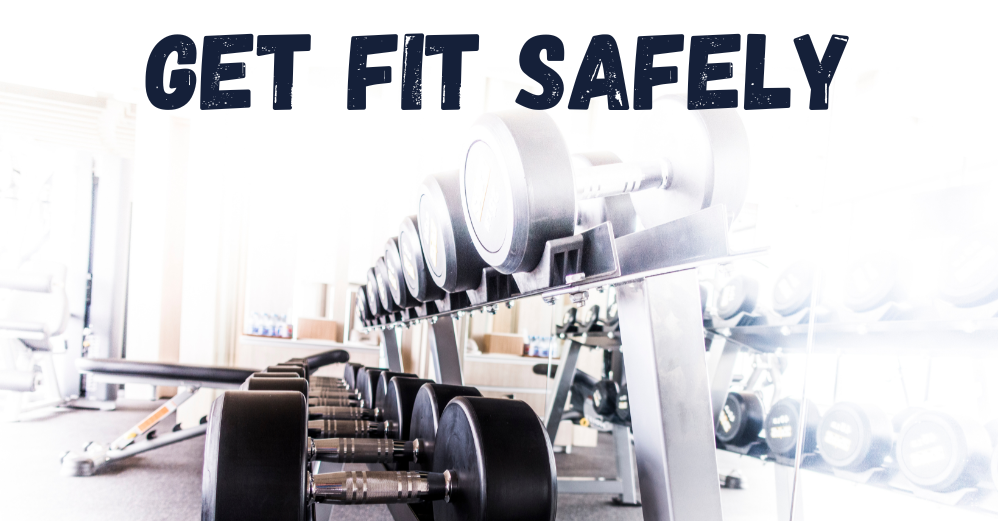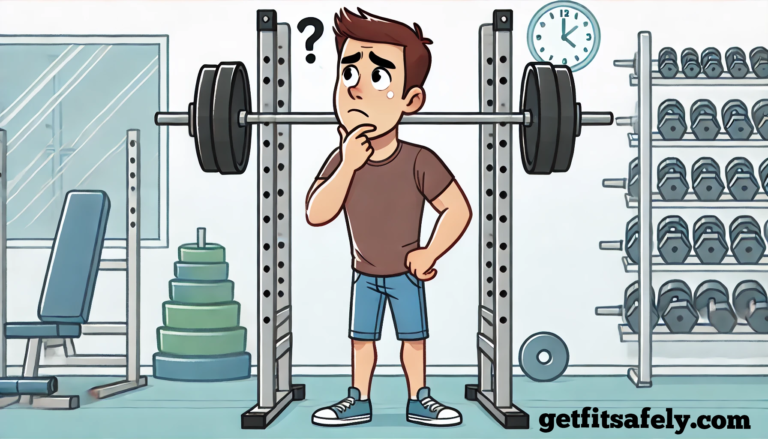Have you ever looked in the mirror after a workout, with your headphones still in and your shirt a little sweaty, and thought:
“Wait… why does my right shoulder look like The Rock and my left more like a half mozzarella?”
Welcome to the club.
No one really talks about it, but muscle imbalances—especially in the shoulders—are one of the most common issues in the gym.
The problem?
It’s sneaky.
You only notice it when one of your deltoids has already gone on vacation while the other has won Mr. Olympia.
And trust me, I’ve been there.
Why It Really Happens (Spoiler: It’s Not Just the Workout’s Fault)
No, you’re not broken.
Our body is naturally asymmetrical.
No one is perfectly balanced, not even those who seem chiseled in marble on Instagram.
And in everyday life, we do everything with a dominant side.
You always carry your bag on the same shoulder.
You always sleep curled to one side.
You write, use your phone, and eat all with the same hand.
Now imagine doing that for years.
Then you join a gym and expect your muscles to magically grow in perfect synchrony?
Yeah, right.
Then add to that:
- Compensations during execution (the stronger side takes all the load)
- Old injuries that make you avoid certain movements
- Reduced mobility on one side (your left shoulder blade moves like a rusty door hinge)
…and the disaster is served.
And what if it isn’t just a volume problem?
Have you noticed that your left shoulder is smaller?
Okay.
But… are you sure it’s only a matter of muscle mass?
Because sometimes the problem isn’t so much in the muscle…
…it’s in how that muscle moves.
And in the position from which it starts.
Yes, we’re talking about posture, hidden tensions, and shoulder blades that act like divas.
How to Recognize an Imbalanced Shoulder (No CT Scan Needed)
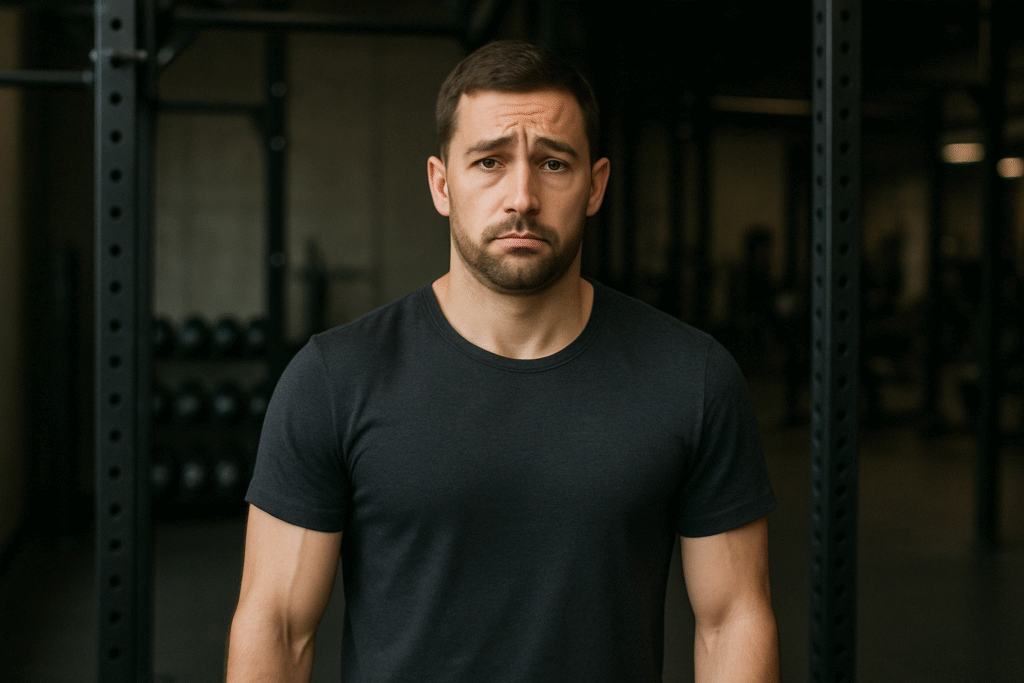
It’s not enough to just look at the deltoid.
Sometimes the imbalance is noticeable even before you start training.
Here are the signals your body is already sending you:
- A shoulder closer to the ear even when standing still
- Clavicles that aren’t parallel
- A more swollen trapezius on one side
- T-shirts that hang “askew” even if you put them on correctly
- Photos where you always appear tilted
- One side fatiguing first, trembling, or losing control during exercises
- Strange aches in the neck and shoulder blade after a workout
Why Does It Happen?
Here are the typical causes that might be sabotaging you behind the scenes:
- As we’ve already seen, a dominant side takes over in most daily tasks
- Desk posture: contracted shoulders, tilted head, backpack always on one side
- Chronic muscle tensions, especially in the trapezius
- Scapular dysfunctions (winged or stuck shoulder blades)
- Scoliosis or a rotated pelvis that makes you compensate upward
When I Realized My Shoulder Was Slacking Off
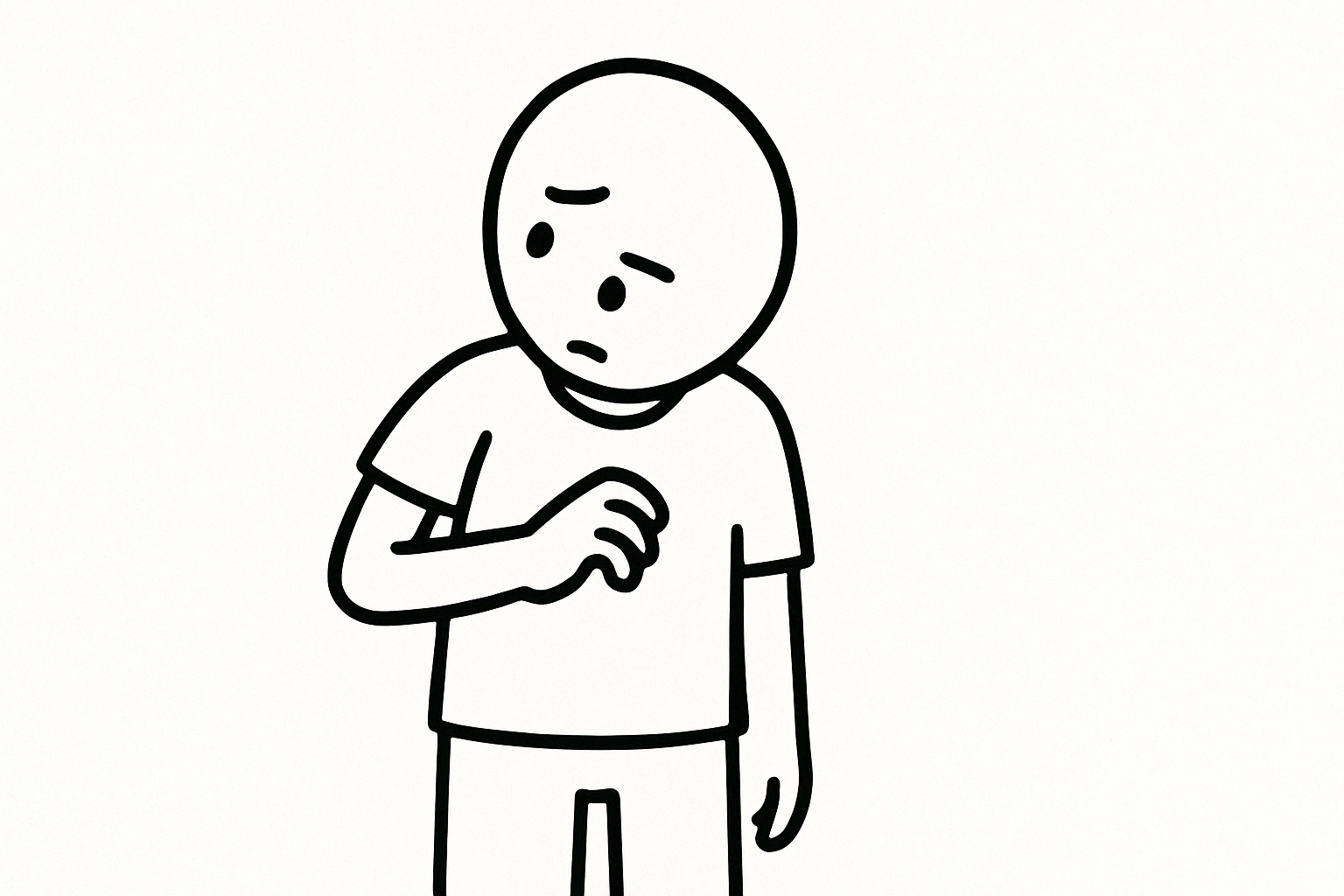
For years, I pushed hard on the bench press.
Barbell, 100 kg, playing tough.
Then one day I tried dumbbells.
And that’s when the epiphany hit.
My right arm rose like a five‐star elevator.
My left arm looked like it was searching for Wi-Fi.
I felt robbed.
Years of bench pressing only to end up with one shoulder like a bodybuilder’s and the other like an intern’s.
But that’s when I decided: no more fake “symmetrical training.”
It was time to fix things.
1. Solution Number One: Unilateral Exercises (Your New Best Friend)
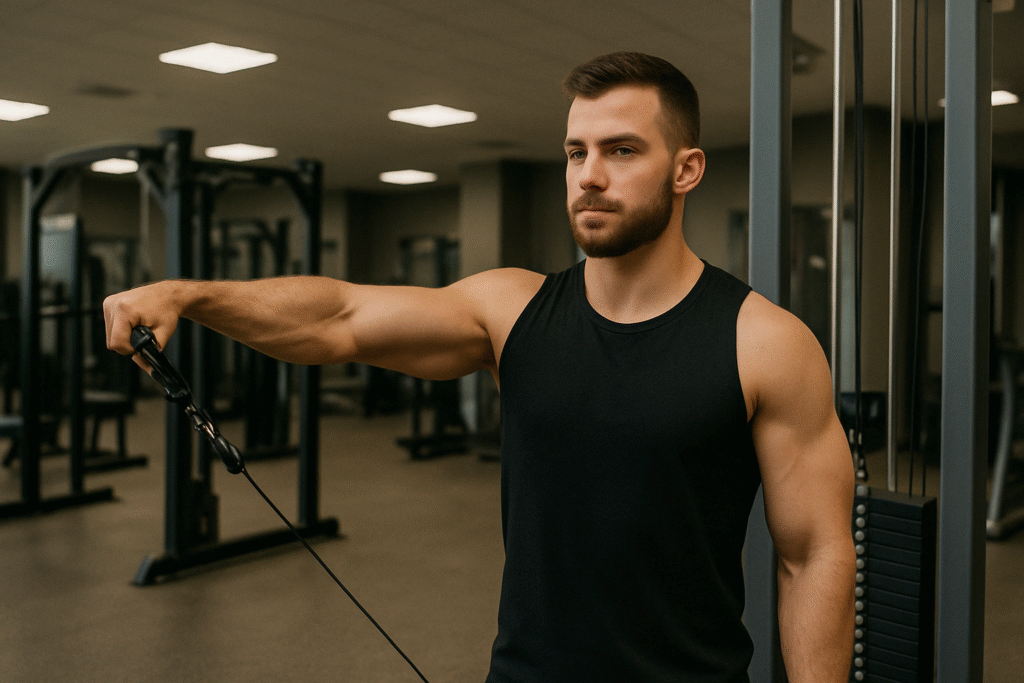
The first step?
Ditch the barbell.
If you really want to even the playing field, you have to start isolating the shoulders one at a time.
And you must start with the weak side. Always.
Because if you start with the strong side, you’ll end up too tired and not give enough attention to the other.
That just won’t do.
Here are some exercises I incorporated with the precision of a surgeon:
- Single-arm dumbbell shoulder press
- Keep your back straight, core engaged, and move slowly as if you were pouring fine wine.
- Single lateral raises
- Focus on the movement. Don’t just flail your arm upward. Lift with the deltoid, not with your entire being.
- Single-arm Arnold press
- It looks flashy, but most importantly, it forces you to work through the full range of motion.
- Single-arm row for the rear deltoids
- Because imbalance isn’t just “in front” – the back can be an even bigger mess.
TIP Bonus
If you really want to give the weak shoulder an extra boost:
- Slow down the eccentric phase of the movement (the lowering)
- Or add a 2–3 second isometric pause at the point of maximum contraction
2. Mobility and Stretching (Every Day, No Excuses)
I ignored this part for YEARS.
And I paid the price in tears, painful shoulder shrugs, and frustration.
If your shoulder blade moves poorly, your deltoid can’t even activate properly.
And you know what the brain does? It compensates.
And guess who compensates? The other side.
Do these exercises every single day:
- Foam rolling the upper back: 1–2 minutes
- Stretching the trapezius and scalenes (neck): 30 seconds per side
- Scapular wall slides: 2 sets of 10
- Band dislocations: with a resistance band, slow and controlled
3. Targeted Reinforcement
Okay, you’ve loosened the tensions and mobilized the shoulder blades, but now you need to build support.
This isn’t about “bulking up” the shoulders, but about reactivating those postural muscles that keep everything aligned.
- Face pulls with a resistance band
- One of the most underrated… and effective… exercises.
- It reactivates the middle trapezius and rhomboids as if you had spent a week in a postural retreat.
- Pull the band toward your face (hence the name), keep your elbows high, and squeeze the shoulder blades together.
- Slow movements, zero momentum. Total focus.
- Y-T-W with light dumbbells
- The letters of the alphabet? Almost.
- Lying face down on an incline bench or stability ball, raise your arms forming first a Y, then a T, and finally a W.
- Each position targets a different group of stabilizing muscles.
- Ridiculously light weights (around 1–2 kg), but they burn as if you were lifting a coffee machine with your pinky.
- Scapular planks
- The “zen” plank, but with active shoulder blade movement.
- Start in a plank, but instead of remaining still, push your shoulder blades outward and then bring them back together, without bending your arms.
- It sounds easy.
- After 10 repetitions, you’ll feel your upper back wake up from years of deep sleep.
4. Change Your Daily Habits
I know, working out at the gym is cool, but the real battle is fought outside, in the little things every day.
Because you can do all the shoulder presses in the world, but if you always carry your bag on the same shoulder… goodbye symmetry.
Here are the daily missions to retrain your body:
- Switch the Side When Carrying Your Bag
- Even if you feel clumsy and off-balance, resist. It’s like training your core on your way to work.
- Use the Mouse with Your Other Hand for at Least 10 Minutes a Day
- I’m not saying become ambidextrous in Excel, but even just navigating Google with your left is neurological exercise.
- Sleep on the Other Side Too
- At first, it might feel like sleeping on a train’s floor, but over time your body will adapt. And it will thank you.
- Hang Your Jacket Using Both Hands
- Or even better, use that lazy hand. Coordination, mobility, and a bit of scapular activation all in one.
- Brush Your Teeth with Your Left (if You’re Right-Handed, of Course)
- It might feel like you’re back in kindergarten, but it’s a fine motor control exercise.
- Plus, you’re training without even thinking about it.
When to Call an Expert
If the difference between your shoulders is very evident, or if you have:
- Persistent pain
- A feeling of instability
- Difficulty with overhead movements
…get checked by a physical therapist or an osteopath.
You might have a deeper musculoskeletal dysfunction, and fixing it now is worth a thousand times more than ignoring it for years.
Mind Over Matter (and Ego)
When I started working on my weak side, I had to face my worst enemy: pride.
Reducing the loads?
Doing more repetitions with less weight?
Being slow and controlled instead of explosive and loud?
It was incredibly difficult.
But it was essential.
Focus on the so-called mind-muscle connection.
Feel the shoulder working.
No tricks, no extra pull from the trapezius or neck.
Just focus, control, and technique.
Could Being Too Young Be the Reason?
Yes, absolutely.
If you’re under 20–22 years old, your body is still a work in progress.
Muscular maturity doesn’t arrive all at once, and often one side of the body “starts earlier than the other,” like siblings racing to put on their shoes.
So no panic: a less developed shoulder at that age can be completely normal.
RELATED:》》》 Deltoid Development: Should You Isolate the Front, Side, and Rear?
Conclusion
If you’ve read this far, you deserve a reward.
Or at least a symmetrical shoulder shrug.
The truth is, correcting an imbalance is more of a mental challenge than a physical one.
It requires awareness, consistency, and the willingness to break out of your routine.
But I assure you, it’s worth it.
More fluid workouts
Less risk of injuries
A more harmonious aesthetic
A posture that makes a great impression
And the next time you look in the mirror, you won’t see one shoulder working while the other takes a vacation.
You’ll see two strong, balanced shoulders ready to support you in every challenge.
Now it’s your turn:
Have you ever noticed an imbalance in your shoulders?
Have you tried unilateral exercises, changed your habits, or discovered something useful?
Tell me in the comments!
Sharing your experience can help others who are fighting the same battle!

